When Stuart Smalley (Al Franken) saves his family in Harold Ramis’ 1995 comedy of the same name, it’s not without setbacks–the worst of them overcome with the aid of those cakey little comforts: Fig Newtons. Sulking in his bedroom after a blowout with his nasty boss, Stuart’s friends plead with him to emerge, to which he replies: “Come back later, maybe when I’ve run out of Fig Newtons.”
We can certainly relate : )
But Stuart would be shocked to know that Fig Newtons—at least in name—no longer exist: Nabisco dropped the “fig” from the title in 2012. Simply calling the cookies Newtons was thought to be a better fit, since the cakey little treats now came in different flavors. Today, that’s everything from Triple Berry, to Sweet Peach and Apricot, to Apple & Cinnamon, although fig is the enduring favorite.
The famous fig filling goes all the way back to the 1880s when Philadelphia baker Charles M. Roser sold his recipe to Boston-based Kennedy Biscuit company (later acquired the companies that merged to form Nabisco.) Kennedy Biscuit named the cookies Fig Newtons, after the town in Massachusetts, and the bars became wildly successful.
While homemade fig fillings can be made with dried figs, we prefer to use fresh figs, cooked with lemon, for a fruitier, more-flavorful result. While it takes a little practice to get the knack of folding the pastry around the fig filling, the result is worth it. One thing you should know: Fresh baked, the pastry is crisp—stored in an air-tight container, it tenders up the day after you bake these into the “cakey” cloak you expect.
Ingredients
- Pastry Ingredients:
- 2 1/2 cups flour, sifted
- 1/4 tsp salt
- 1/2 cup (one stick) butter
- 1/2 cup white cane sugar
- 1/2 cup firmly-packed light brown sugar
- 2 eggs
- 1/2 tsp vanilla
- Fig Preserves Ingredients:
- 6 cups fresh, whole figs (any variety)
- 3 cups water
- 3 cups sugar
- 1 sliced fresh lemon, seeds and peel removed
- 1/8 tsp salt
Instructions
- Make fig preserves: Snip stem ends from figs and discard. Rinse trimmed figs in colander. Combine figs, sugar, water and lemon in tall soup pot. Cook, stirring often, over low heat until fig mixture is quite thick—about 2 ½ hours. Using a hand-held immersion blender, blend to a smooth preserve. Stir in salt.
- Make pastry for bars: Cream butter and gradually add both sugars. Add eggs and vanilla. Stir in the dry in ingredients until no streaks remain. Shape into a ball of dough; split dough in half. Shape each half into a flat rectangle. Wrap with plastic wrap and chill for 1 hour.
- Assemble bars: Preheat oven to 350. Cover a cookie sheet with parchment paper. Set aside Spread clean work surface with two sheets of plastic wrap, overlapped at the center. Using an oiled rolling pin, roll out one of the dough pieces to a 9 x 14-inch rectangle on the work surface. Using sharp kitchen shears, cut this rectangle into three, 14 x 3-inch strips, cutting through the plastic wrap underneath, and making sure you have a few inches of plastic wrap extending from the narrow ends of each strip. Separate the pastry strips pulling them away from each other on the work surface and keeping the plastic wrap adhered to the bottom of each strip. Place two of the strips in the fridge to keep cool while you work with the first strip. Spread a line of fig preserves down the center of the first pastry strip (Not too much, or the filling will ooze out during baking). Lift one long edge of the pastry up and over the center of the filling, using the plastic wrap to help you lift and fold. Then, separate that edge of plastic wrap from the dough and smooth the plastic back down onto the work surface. Repeat these actions with the far edge of the pastry, making sure the fig filling is completely enclosed in the pastry. You will now have a long, fig-filled log. Pick up the edges of the plastic wrap and carefully transfer the log to the parchment lined cookie sheet, gently flipping the log seam-side down. Repeat all steps with the other two 14 x 3-inch strips. Bake the three logs at 350 for 15 minutes or until lightly browned. Remove from oven. Allow to cool slightly. Using a very sharp knife, cut each log into cookie slices. Repeat this whole process with the remaining pastry and more filling. Any remaining filling keeps well refrigerated.

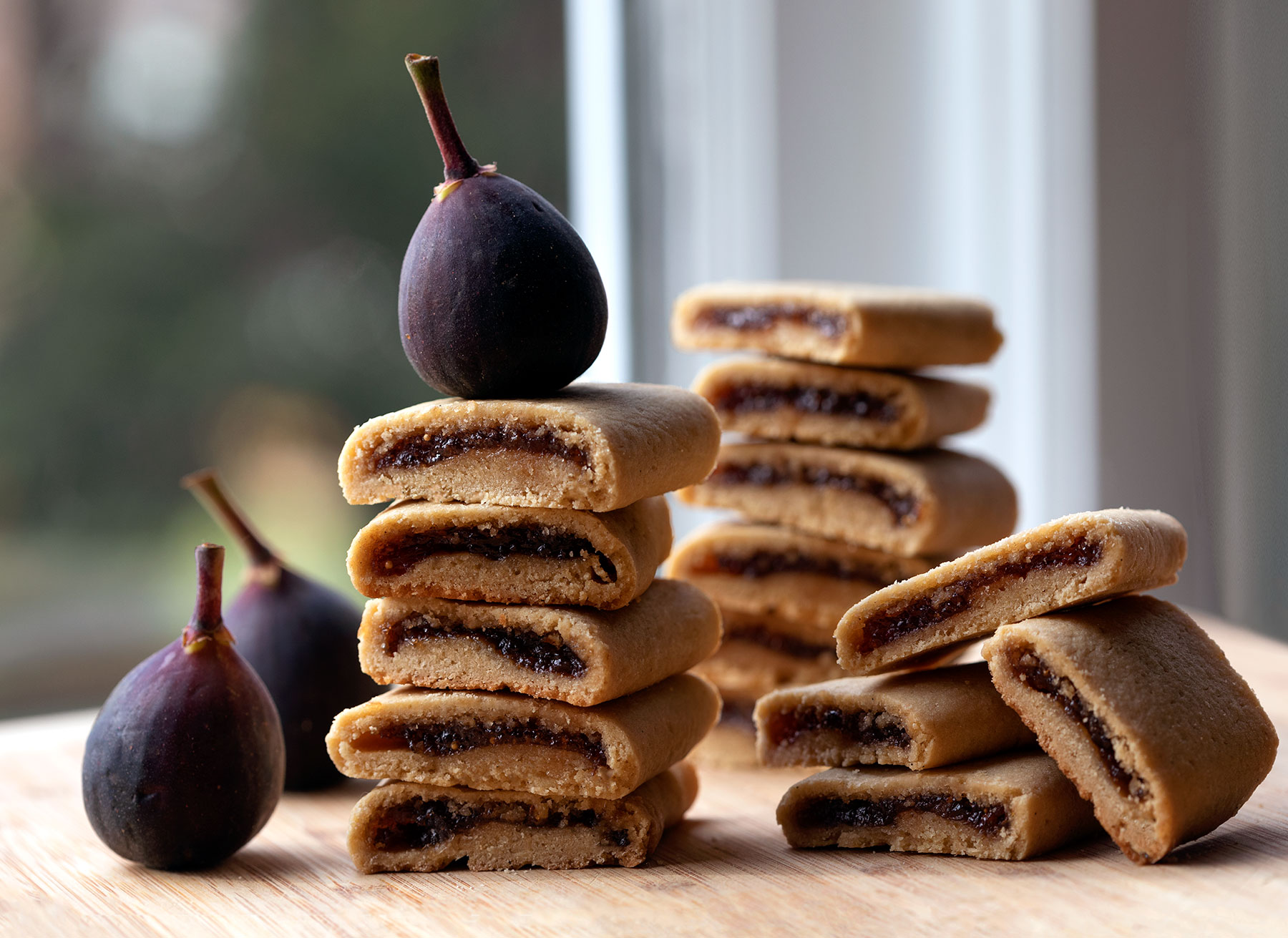

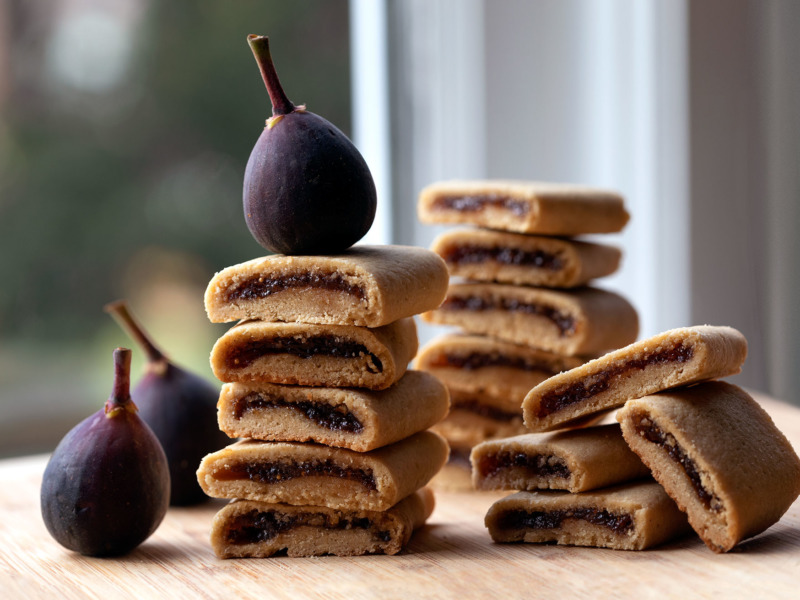
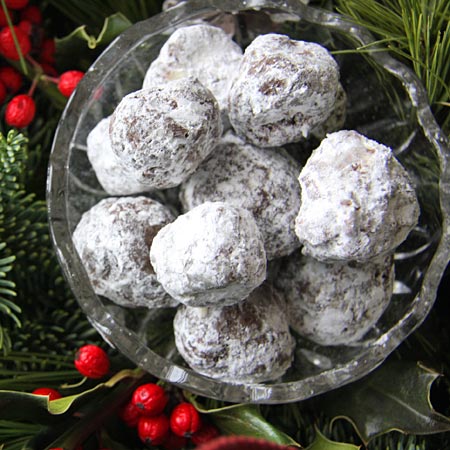
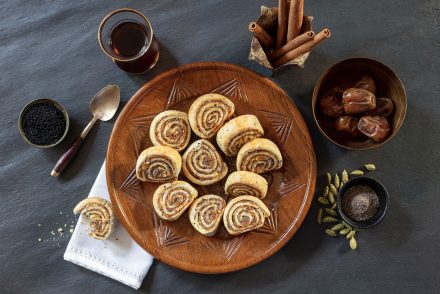
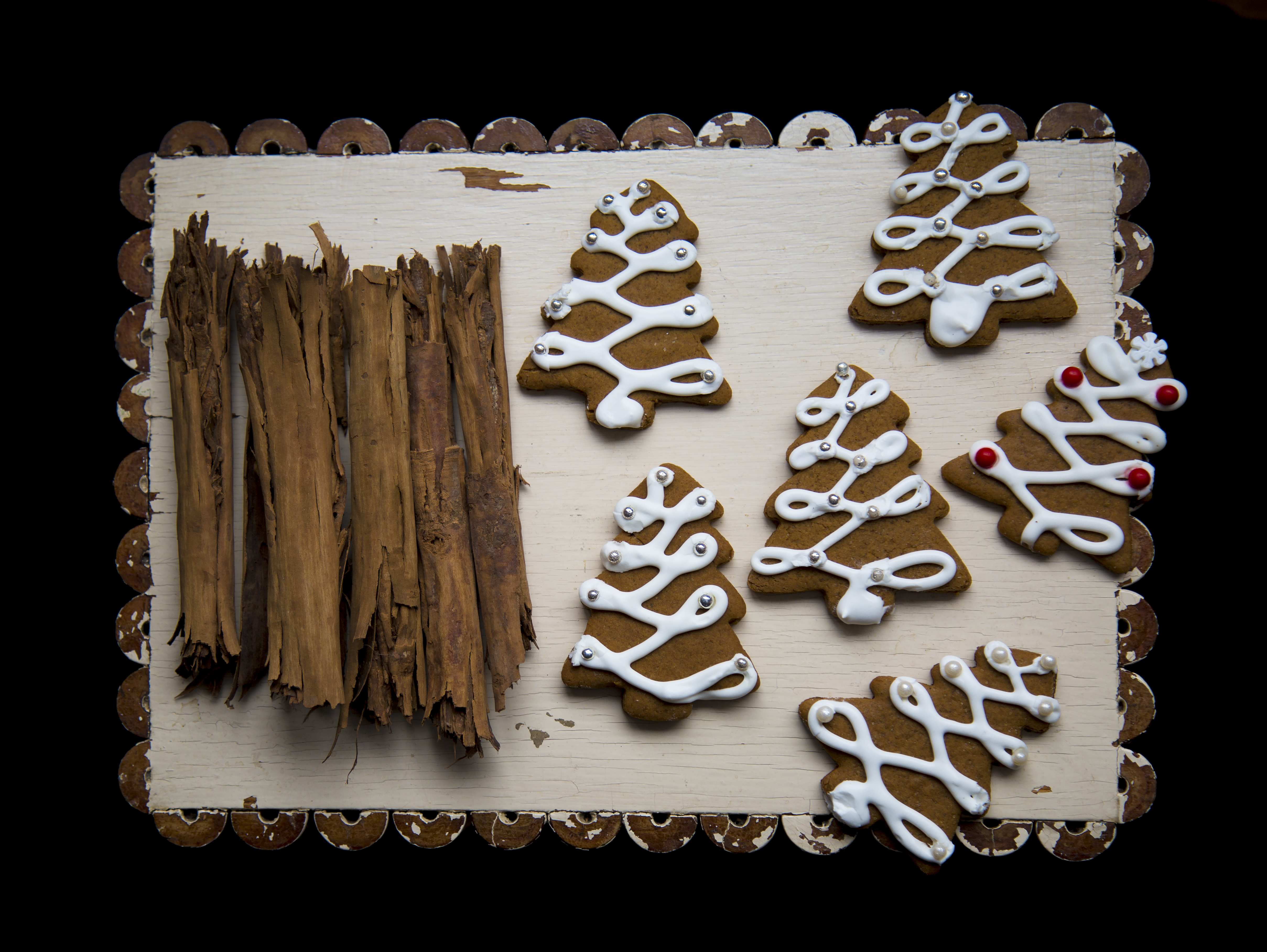
3 Comments
The recipe as written in 2017 (which I found and used in 2018) gave a much better explanation of the process of putting the cookie rolls together. It is a process potentially fraught with frustration as the doughs get warm while rolling cutting and filling. Maybe I’m just a slow worker but I had to come up with a way to handle the 3×14 sheets individually, putting the others back in the Fidge as I filled and rolled each one in turn. I rolled the initial 9×14 sheet out on greased parchment (not plastic) with a greased rolling pin, otherwise it stuck like crazy. Then, as you suggest I cut through the parchment to separate the 3×14 piece and put the other 3×14 rectangles back in the fridge while I deal with the one and get it on the baking sheet. I also would warn people to not put too much filling down the center line. More is not better. It just makes it difficult to close the tube and lends to the cookie “exploding” during baking. I have handwritten all my own reminders regarding the process, but I was just checking back looking for a new copy of the recipe.
Hi Leigh! Thanks very much for your comments! I went back in and tweaked the method description to make it easier for people. They are a little tricky, but once you have made the cookies, it all makes sense! –Monica
Followed recipe exactly and these cookies turned out amazing! Recipe seems hard when you first read it but if you follow along step by step it is pretty simple. Already looking forward to next fig season.
Thank you!